Blog
What Is OCuLink: A Beginner’s Guide
Most of us understand USB as a connection, but recently, OCulink came into the limelight. Its excellent data transfer capability shines in applications that require high performance, such as gaming. So, it is gradually winning over some people with its good performance and cost-effectiveness. This guide will take you through OCulink as a connectivity method and compare it with connectivity standards such as USB, Thunderbolt, etc.
Table of contents
What is OCuLink?
OCuLink stands for Optical Copper (Cu = chemical symbol for copper) Link and is an externalized connection technology that allows you to connect PCIe devices using external cables. The interface was developed by the PCI-SIG (Peripheral Component Interconnect Special Interest Group). OCuLink 2.0 has a bandwidth of up to 64 GB/s.
What is OCuLink Cable?
The OCuLink cable is an OCuLink-compliant cable designed to provide a smaller, more flexible connectivity solution. It is terminated with an OCuLink connector and complies with various standards, including SAS and PCIe.

OCuLink cable can provide up to 64Gbps bandwidth, making it especially suitable for data centers, high-performance presses, and other high-speed data transmission application scenarios. It has a wide range of product specifications, with multi-channel options, of which 4X is the most commonly used type. In addition, the design is flexible; straight or side exits can be customized according to the user’s needs.
What is OCuLink Port?
OCuLink ports comply with the OCuLink connectivity standard and are mainly used for external graphics cards, server motherboards, storage devices, etc. Users can connect their PCIe pens to the host computer via external cables without taking up the internal card slots through these ports. The OCuLink port supports different protocols, such as PCIe 3.0 and PCIe 4.0, and storage protocols, such as SATA and SAS.

OCuLink vs. Thunderbolt
- Supported protocols: OCuLink 2.0 supports SAS 4.0 and PCIe 4.0. Thunderbolt 5 is based on the USB4 v2.0 protocol and supports PCIe and DisplayPort protocols.
- Bandwidth: OCuLink 2.0 has a bandwidth of up to 64 Gbps, while Thunderbolt 5 has a bandwidth cap of 120 Gbps.
- Cost: OCuLink includes adapters and cables that cost tens of dollars, while a good Thunderbolt will cost a few hundred dollars.
- Performance: OCuLink’s high bandwidth performance is beautiful for eGPU setups and offers better frame rates and lower latency than the much weaker Thunderbolt.
- Setup: Thunderbolt is relatively easy to set up and is friendlier to the less technically savvy.
- Universality: Thunderbolt still offers the advantages of widespread adoption, plug-and-play convenience, and a broader ecosystem of compatible devices. But OCuLink is coming on strong, breaking out of the server room and into the consumer space.
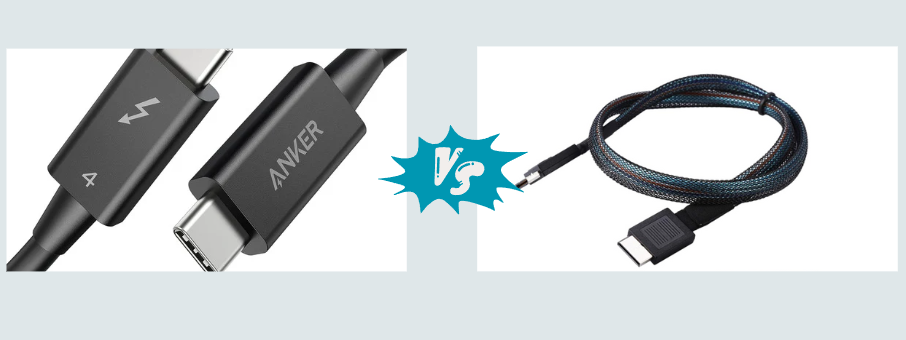
OCuLink vs. USB4
- Conceptual Comparison: OCuLink is a connectivity standard developed by the PCI-SIG (PCI Special Interest Group) for high-bandwidth internal and external device connectivity. USB is an industry standard that allows power and data exchange between viable devices.
- Data Transfer Rate: USB4 supports 2080Gbps, while PCIe4.0’s maximum bandwidth of OCuLink is 64Gbps.
- Supported protocols: OCuLink 2.0 supports SAS 4.0 and PCIe 4.0. USB4 is based on the Thunderbolt 3 protocol and supports PCIe and DisplayPort protocols.
- Performance: OCuLink is designed for external graphics cards, so it performs better in games than USB4.
- Cost: OCuLink is cheaper to design, while USB4 is more costly due to its more features.
- Usage: OCuLink is mainly used for high-performance hardware connections. In contrast, USB4 is more versatile and can connect various devices, including printers, monitors, etc.
Overall, OCuLink 2.0 has a clear advantage in terms of bandwidth and stability. It is especially suitable for applications that require high bandwidth and low latency, such as external graphics card docking stations or cloud gaming. USB 4, on the other hand, performs better in terms of versatility and compatibility and is suitable for a wider range of application scenarios.

Thunderbolt 5 vs Thunderbolt 4 vs USB4 vs USB3.2
| Item | Thunderbolt 5 | Thunderbolt 4 | USB4 | USB3.2 |
| Data transfer rate | 120 Gbps | 40 Gbps | A minimum of 20 Gbps and 40 Gbps are optional. 120 Gbps is optional with USB4 Version 2.0 | 5 Gbps (Gen 1), 10 Gbps (Gen 2), or 20 Gbps (Gen 2×2) |
| PC video requirements | Dual 6K or Dual 8K | Dual 4K or Single 8K | One monitor | One monitor |
| PC data requirements | Pcle:64 Gbps USB3:10 Gbps | PCIe: 32Gbps USB 3: 10Gbps | USB 3: 10Gbps | USB 3: 5Gbps |
| Required PC charging on at least one computer port | Required up to140W available up to 240W | Required up to 100W available up to 140W | Available up to 240 W | Available up to 240 W |
| Minimum PC port power for accessories | 15W | 15W | 7.5 W | 4.5 W |
| compatibility | Compatible with previous generations of Thunderbolt | Thunderbolt 4 backward compatible Thunderbolt 3, compatible with USB 4.0, and previous generations of USB | Compatible with previous generations of USB, compatible with Thunderbolt 5, Thunderbolt4, Thunderbolt3 | Compatible with previous generations of USB |
FAQ
Q. What versions of OCuLink are available?
A. OCuLink is currently available in two versions. Below is a detailed description of these two versions:
- OCuLink 1.0: This is the initial version, which was proposed in 2013. It supports the PCIe 3.0 protocol and provides a 4-lane PCIe Gen 3 configuration with a bandwidth of 8GT/s per lane and up to 32Gbps.
- OCuLink 2.0: This upgraded version supports the PCIe 4.0 protocol and provides a higher data transfer rate. It also offers a 4-lane PCIe Gen 4 configuration, with the bandwidth of each lane boosted to 16GT/s for a total bandwidth of up to 64Gbps.
Q. Can Thunderbolt 5 devices be used with Thunderbolt 4 ports?
A. Yes, Thunderbolt 5 devices are backward compatible with Thunderbolt 4 ports. However, this is not recommended because Thunderbolt 5 devices can only run at the maximum rate of Thunderbolt 4 (40Gbps), which does not allow the full potential of Thunderbolt 5 to be realized. Not only does this waste the cost of purchasing the latest device, but it also doesn’t help your gaming experience or productivity gains.
Q. Which one should I choose, Thunderbolt 4 or USB4 cable?
A. If you need to connect multiple monitors and don’t require much cable versatility, go for the Thunderbolt 4. However, when you want better cable compatibility and functionality and have a smaller budget, the USB4 cable is a better choice. If you want to focus on other aspects of the two, you can check out the comparison table above and choose the cable that best suits your needs.
-
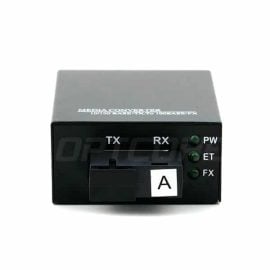 10/100Base-TX to 100Base-FX Multimode 2km Mini Media ConverterUS$ 14.00 (Excl. VAT)
10/100Base-TX to 100Base-FX Multimode 2km Mini Media ConverterUS$ 14.00 (Excl. VAT) -
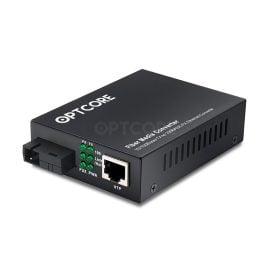 10/100Base-TX RJ45 to 100Base-BX 20km Single Fiber WDM Media Converter (SC/ST/FC)US$ 12.00 (Excl. VAT)
10/100Base-TX RJ45 to 100Base-BX 20km Single Fiber WDM Media Converter (SC/ST/FC)US$ 12.00 (Excl. VAT) -
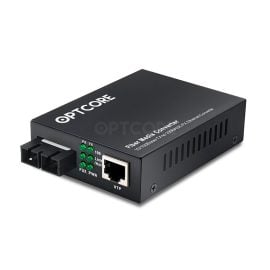 10/100Base-TX to 100Base-FX Singlemode 40km Fiber Media Converter (SC/ST/FC)US$ 14.50 (Excl. VAT)
10/100Base-TX to 100Base-FX Singlemode 40km Fiber Media Converter (SC/ST/FC)US$ 14.50 (Excl. VAT) -
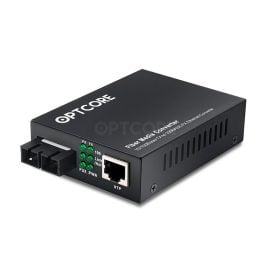 10/100Base-TX RJ45 to 100Base-FX Multimode 2km Fiber Media Converter (SC/ST/FC)Price range: US$ 11.50 through US$ 12.00 (Excl. VAT)
10/100Base-TX RJ45 to 100Base-FX Multimode 2km Fiber Media Converter (SC/ST/FC)Price range: US$ 11.50 through US$ 12.00 (Excl. VAT)
Conclusion
This article introduces the OCuLink interface standard and related interface standards. You can learn about their differences. Regarding trends, adopting OCuLink in the consumer sector seems inevitable, even though it appeared later. More importantly, it offers significant advantages for external graphics cards, making it an attractive alternative to eGPU solutions. Therefore, more and more eGPU products are expected to support both OCuLink and Thunderbolt ports.
Reference
- https://www.anker.com/au/blogs/hubs-and-docks/everything-you-need-to-know-about-thunderbolt-4







